 |
 |
 |
| |
Spleen and Bone Marrow May Be Key Players in Arterial Inflammation With HIV
|
| |
| |
"the spleen and bone marrow may represent a key reservoir for HIV" and that "HIV may cause activation of inflammatory cells in the spleen resulting in elevated cardiovascular risk."
".....Compared to matched controls, virally suppressed HIV-infected individuals had significantly higher levels of vascular inflammation, splenic tissue activity, and bone marrow activity -Elevated inflammation seen in those on ART and elite controllers .......Among treated and suppressed individuals, inflammatory and immunologic markers were associated with higher vascular activity (but not monocyte markers).....Among treated and suppressed subjects, inflammatory markers and HIV persistence were associated with splenic activity...."
CROI 2014, March 3-6, 2014, Boston
Mark Mascolini
A case-control comparison of men with and without HIV found that higher arterial inflammation in the HIV-positive men was significantly associated with bone marrow and splenic metabolic activity [1]. Principal investigator Priscilla Hsue (University of California, San Francisco, UCSF) believes her findings suggest that the spleen--often regarded as a superfluous organ--may play a critical role in the heightened inflammation and cardiovascular risk seen in people with HIV.
Hsue noted that chronic monocyte/macrophage activation probably explains the increased arterial inflammation and cardiovascular risk in people with HIV. Arterial inflammation measured by FDG-PET/CT scans correlates with monocyte/macrophage activity and predicts cardiovascular disease. The monocyte/macrophages of interest, Hsue said, come from bone marrow and transiently reside in spleen. After myocardial infarction, monocyte/macrophages migrate from the spleen to injured tissue, where they participate in regulation of inflammation [2] and development of heart failure [3]. Research also shows that the spleen is a major reservoir for HIV during antiretroviral therapy [4,5].
To explore the relationship between spleen and bone marrow metabolic activity and FDG-PET/CT-measured vascular inflammation, Hsue and colleagues conducted a case-control study. Cases were 27 HIV-positive men in the UCSF SCOPE cohort. The investigators matched each HIV-positive man to an HIV-negative man by age and Framingham risk score. The HIV group included 16 antiretroviral-treated men with viral suppression, 7 elite controllers (who suppress HIV RNA without treatment), and 4 untreated noncontrollers.
In the HIV-positive and negative groups, median age stood at 54 and 55 and median Framingham risk score at 6% and 5%. A lower proportion of men with HIV were white (52% versus 89%), a marginally higher proportion had diabetes (7% versus 0%), a slightly lower proportion had hypertension (30% versus 37%), and a higher proportion currently smoked (37% versus 19%). Lipid levels were similar in cases and controls, except for lower median triglycerides in the HIV group (89 versus 119 mg/dL).
Median duration of HIV infection stood at 21.5 years in treated controllers, 23 years in elite controllers, and 3 years in untreated noncontrollers. Current median CD4 counts in the three groups were 591, 1075, and 664. The treated group had taken antiretrovirals for a median 9.1 years. All treated men and all elite controllers had a viral load below 75 copies. Four treated men and 2 elite controllers had HCV infection, while none of the 4 untreated men did.
FDG-PET/CT-measured metabolic activity was significantly greater in HIV-positive than negative men in aorta (2.8 versus 2.2 standardized uptake values [SUV], P < 0.0001), bone marrow (3.6 versus 2.5 SUV, P = 0.0002), and spleen (3.3 versus 2.4 SUV, P = 0.0001). When Hsue and colleagues limited the analysis to the 16 antiretroviral-treated men, results were nearly identical and significant for each comparison.
Vascular inflammation correlated strongly with splenic metabolic activity in HIV-positive men (Spearman correlation 0.53, P = 0.014) and even more strongly in HIV-negative men (Spearman correlation 0.73, P = 0.00016). Vascular inflammation also correlated with splenic metabolic activity in the antiretroviral-treated subgroup, but that correlation fell short of statistical significance (Spearman correlation 0.46, P = 0.13).
Bone marrow metabolic activity correlated strongly with vascular inflammation in men with HIV (Spearman correlation 0.80, P < 0.0001) and HIV-negative men (Spearman correlation 0.78, P = 0.00014). The correlation remained significant when the researchers limited the analysis to antiretroviral-treated men (Spearman correlation 0.84, P = 0.0026).
Bone marrow metabolic activity also correlated with splenic activity in men with HIV (Spearman correlation 0.51, P = 0.052) and HIV-negative men (Spearman correlation 0.59, P = 0.020). Vascular, bone marrow metabolic activity, and splenic activity did not correlate with metabolic activity in two control tissues--pectoralis muscle and subcutaneous fat.
In the antiretroviral-treated group, five markers of inflammation were significantly associated with vascular inflammation and eight were not. Integrated HIV DNA was not associated with vascular inflammation in these men. Four inflammation markers were associated with splenic metabolic activity in antiretroviral-treated men, as was integrated HIV DNA (RR 1.14, 95% CI 1.04 to 1.26, P = 0.008). The 0.47 Spearman correlation between integrated HIV DNA and splenic metabolic activity stopped short of statistical significance (P = 0.17).
Hsue cautioned that her study is small and "hypothesis generating." She also noted that, despite matching, cases differed somewhat from controls in ways that could affect metabolic activity and inflammation. But with those caveats in mind, she concluded that these HIV-positive men had significantly higher levels of vascular inflammation, splenic tissue metabolic activity, and bone marrow activity than men without HIV. The correlations between splenic and bone marrow activity and vascular inflammation, she proposed, suggest a systemic inflammatory disease.
The investigators proposed that "the spleen and bone marrow may represent a key reservoir for HIV" and that "HIV may cause activation of inflammatory cells in the spleen resulting in elevated cardiovascular risk."
CROI webcast:
http://www.croiwebcasts.org/console/player/22265?mediaType=slideVideo&
References
1. Hsue PY, MacNabb M, Kaplan R, et al. Arterial inflammation in HIV as measured by FDG-PET/CT is associated with splenic activity. CROI 2014. Conference on Retroviruses and Opportunistic Infections. March 3-6, 2014. Boston. Abstract 131.
2. Swirski FK, Nahrendorf M, Etzrodt M, et al. Identification of splenic reservoir monocytes and their deployment to inflammatory sites. Science. 2009;325:612-616.
3. Ismahil MA, Hamid T, Bansal SS, Patel B, Kingery JR, Prabhu SD. Remodeling of the mononuclear phagocyte network underlies chronic inflammation and disease progression in heart failure: critical importance of the cardiosplenic axis. Circ Res. 2014;114:266-282.
4. Dinoso JB, Rabi SA, Blankson JN, et al. A simian immunodeficiency virus-infected macaque model to study viral reservoirs that persist during highly active antiretroviral therapy. J Virol. 2009;83:9247-9257.
5. Dutta P, Courties G, Wei Y, et al. Myocardial infarction accelerates atherosclerosis. Nature. 2012;487:325-329.
--------------------------







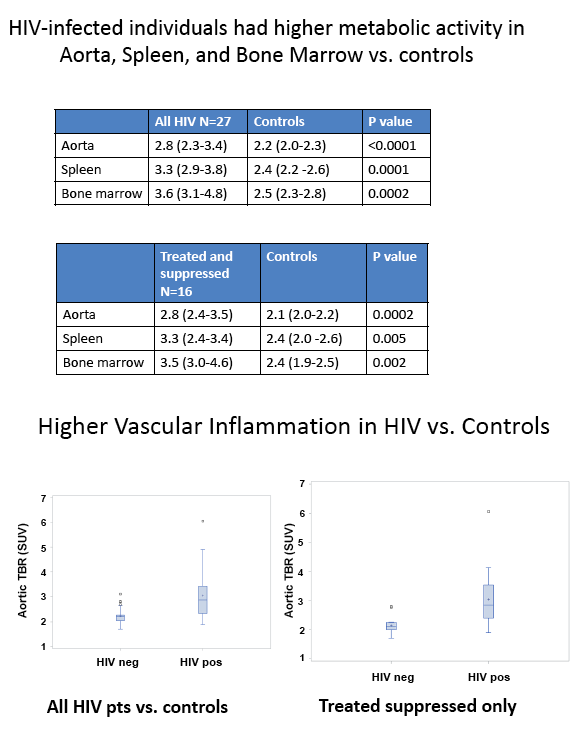
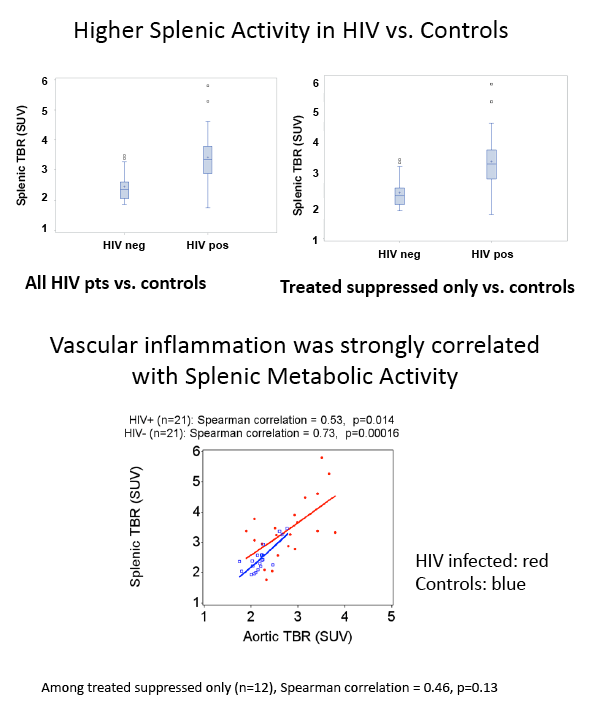
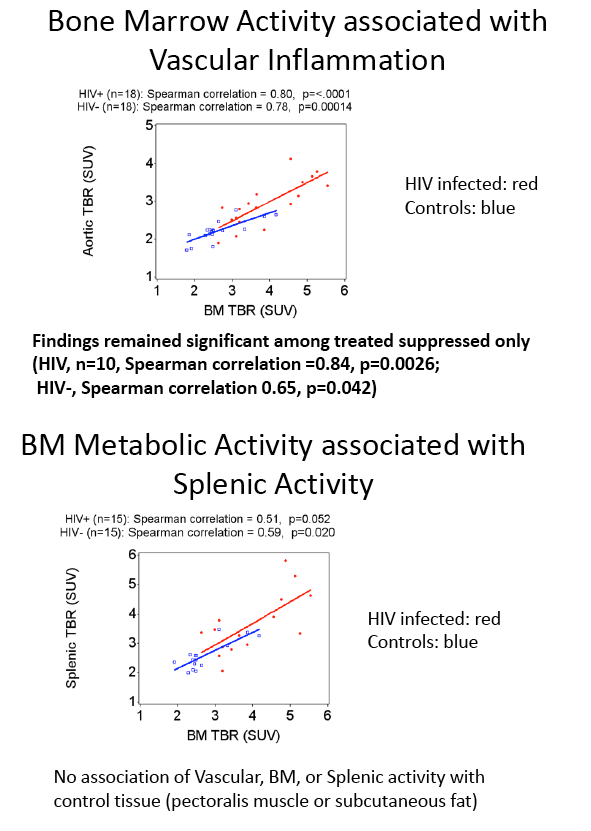
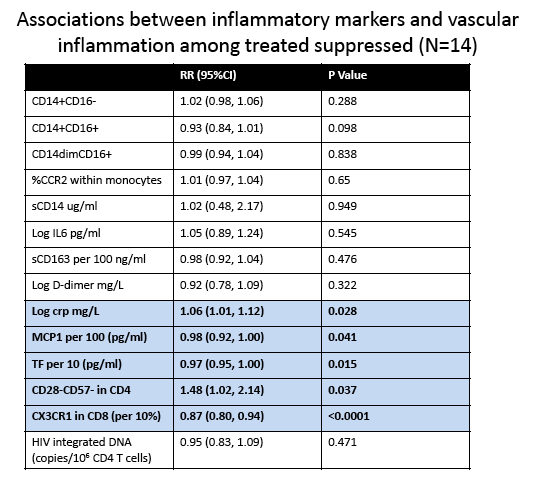
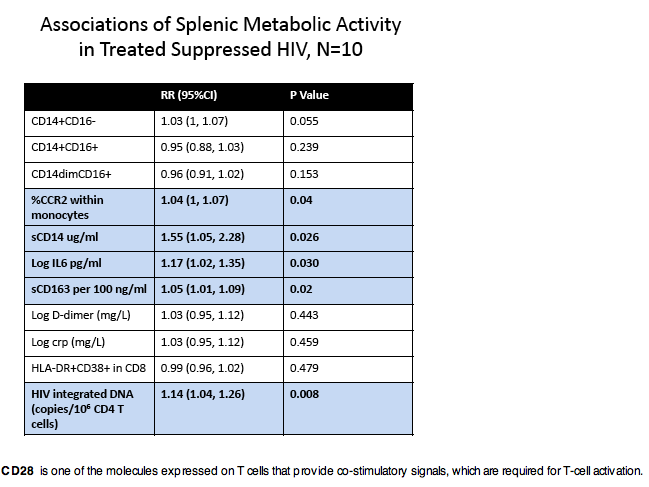
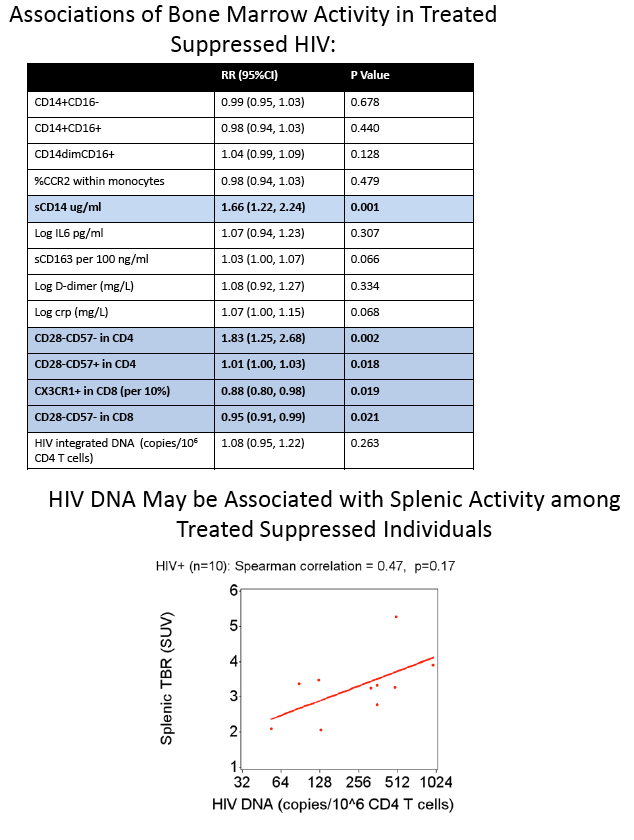

|
| |
|
 |
 |
|
|